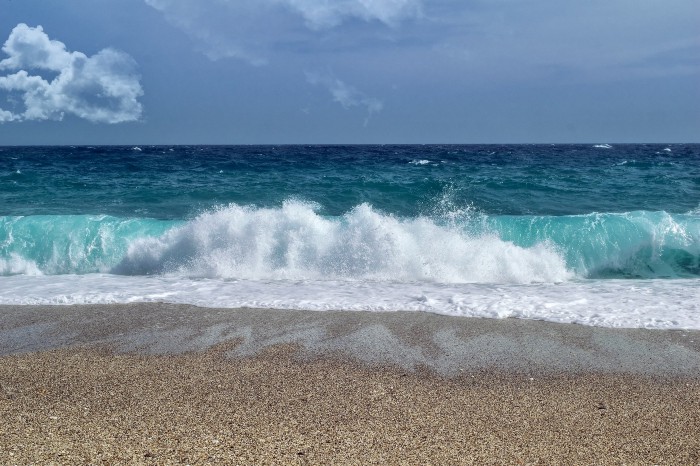Involve community in cleaning Mumbai’s seafeatured
I have always been fascinated by the sea. As a kid when I visited Mumbai, I would sit for hours at a window and stare at the Arabian sea. I eagerly looked forward to getting into the water. I remember going to Dadar Chaupati and entering the water in the 80s. You could just about do it then but is impossible now given how filthy the water is. The stink from Mithi in Bandra, when you drive past it, will kill any desire to touch the sea water. There is hope that this would change. Mumbai has tendered six state of the art Sewage Treatment Plants (STP) in the city. However, given the experience of STPs across the country, Mumbai would be well advised to do a better job in monitoring these STPs when they become operational and also involve the local community in this effort. Otherwise, we may spend a lot of money but may get very limited results. To understand this, let us start with why the water in the sea around Mumbai is filthy.

Water gets dirty from two types of human activities. First, industries let out their effluents into small rivers and streams which empty into the sea. Secondly, the discharge from toilets and kitchens in households and commercial establishments leads to mainly organic waste entering the water. Let us take a quick look at industrial discharge.
Industries are supposed to treat their effluents before discharging them but many don’t. They take advantage of the fact that state pollution control boards, the agencies in charge of enforcing pollution laws, are understaffed and sometimes corrupt. The challenge of getting thousands of small and big factories, some formal and others informal, to obey the law is a big one. It will take time for us to tackle this challenge. However, that need not make us despondent. Industrial waste may not be the biggest contributor to organic pollution.
Household organic waste might be a much bigger contributor to water pollution than industries. This report from Central Pollution Control Board states that industries contribute less than 5% of the Biochemical Oxygen Demand (BOD) load of Yamuna in Delhi. BOD is a measure of organic pollution. I would bet that household and commercial discharge is the biggest cause of organic pollution even for Mumbai. Now, the wastewater from households is supposed to be treated by a STP before it is discharged, but this system has two challenges.
First, not all households are connected to Sewage lines. Waste water from unauthorized building and slums may flow to the nearest drains which may flow untreated to nallahs and rivers like Mithi. To connect these households to sewage lines is not an easy task. Sewage lines need to be built in often narrow roads with very little information on other utility lines which might be serving households. Such projects take time and are rarely popular with the residents.
The second challenge with the system is that STPs don’t work as per norms. The country is littered with plants that were built with a lot of fanfare but never delivered. The Mumbai tender is for the private bidder to build and operate the plant for a few years but what prevents the bidder to do a bad job of operating the plant? Maharashtra Pollution Control Board publishes a report on the performance of STPs across the state but the report is not timely. Additionally, the pollution numbers are for the whole year. A plant can have a good annual average performance while being awful on some days. If the performance of a plant is not being monitored regularly, there is a good chance that the operators become lax. This is doubly problematic in Mumbai as the opposition is already alleging that the cost of STPs in Mumbai — Rs. 15,000 Crores — is much higher than that in the rest of the country. What is the solution?
We must mandate that all STPs in Mumbai measure and publish their operating performance online. This is something that Bengaluru already does so it is technically possible to do it. Bengaluru does another interesting thing. It involves community members in keeping an eye on the discharge quality. These may be residents living near the lakes where the treated water is being discharged or farmers which use the treated water. We should do this in Mumbai too. People living in fishing villages in Worli and Mahim or vendors on Juhu beach or walkers on Bandstand are likely to notice when the water round them starts stinking. And they are likely to care much more than someone living far away. Creating a mechanism to take fast feedback from these communities would be a good way of making sure that the STP operators stay honest.
Imagine living in a city where there is no stench when you drive past a river. Where you see fishing folk jump from their boats into the water. Where you can whip out your phone and reassure yourself that all the STPs are working well. A city where you can decide to just take a towel and take a dip in the sea on any of its beaches. Mumbai can be that city.
My thanks to Priyali, Vishwanath and Indra for helping me understand the complexity of this subject. Errors are all mine.
Author –
Yogesh Upadhyaya
(Yogesh Upadhyaya is one of the founders of AskHow India. Blogs are personal views.)
You can follow AskHow India (@AskHowIndia) or me (@YogeshUpadh) on twitter or me on LinkedIn or Medium. DM me if you wish me to put you on WhatsApp distribution list.



